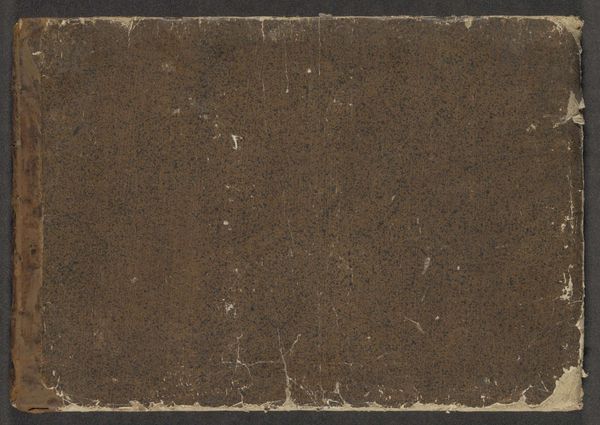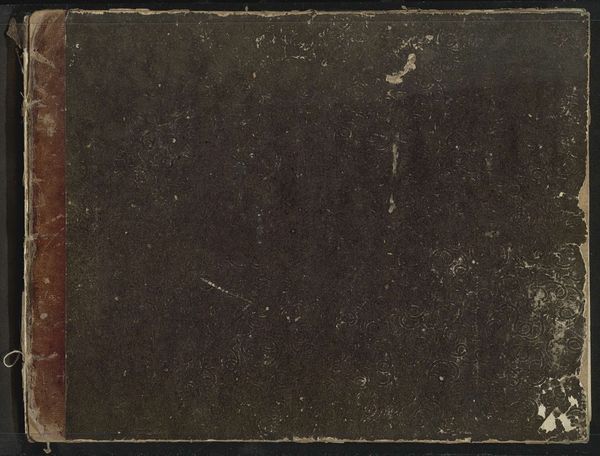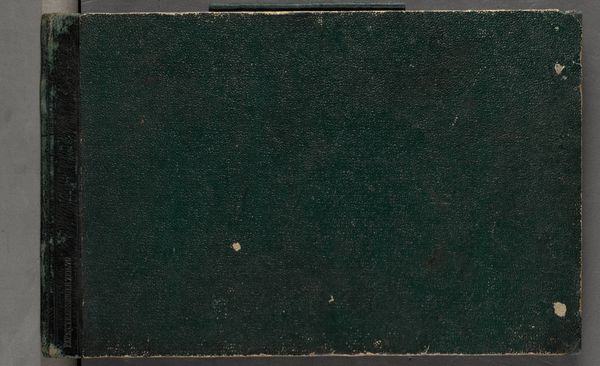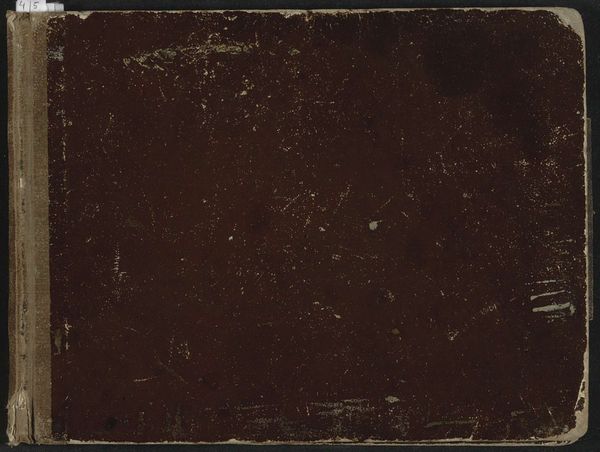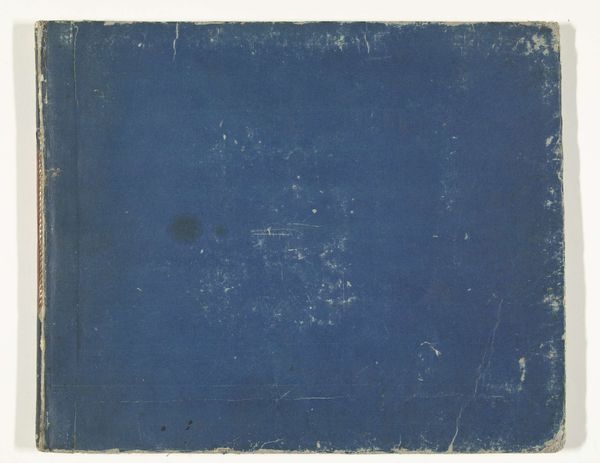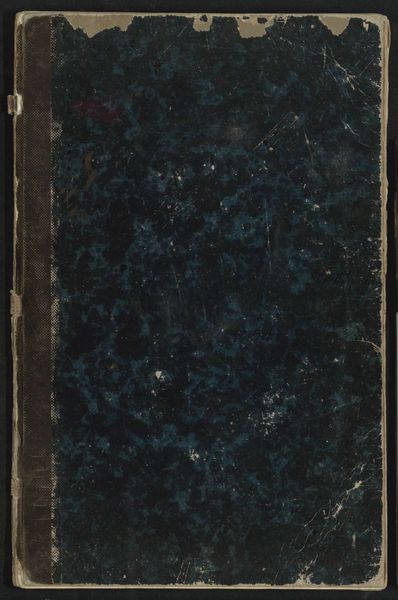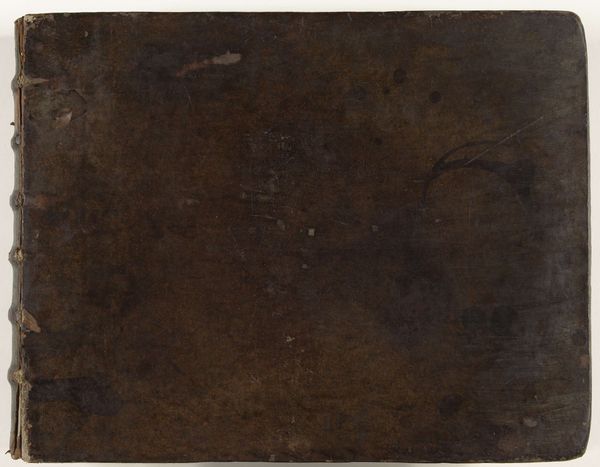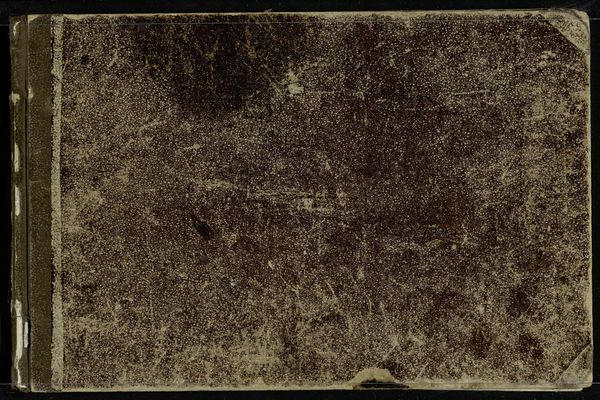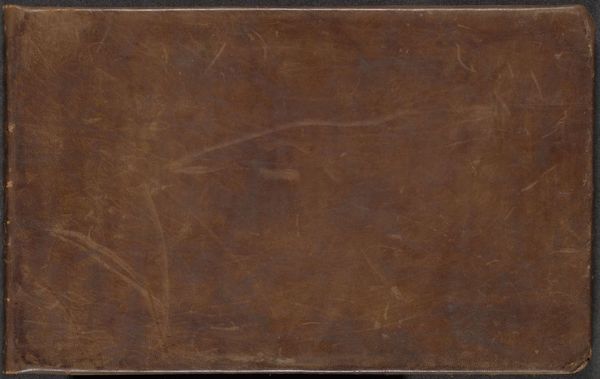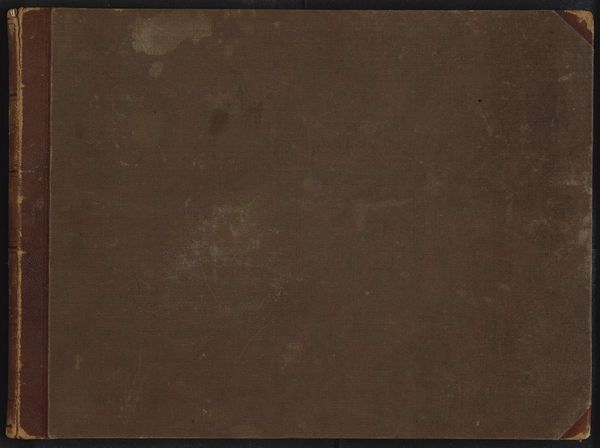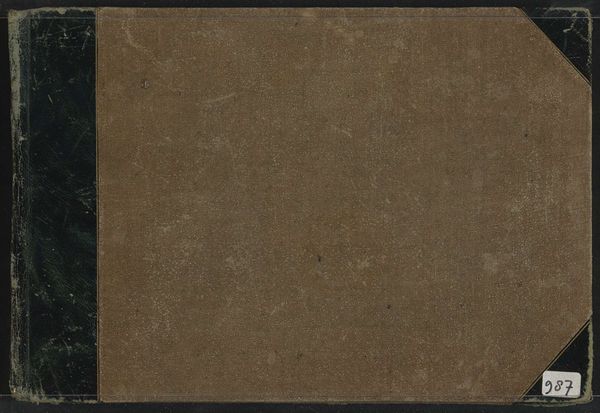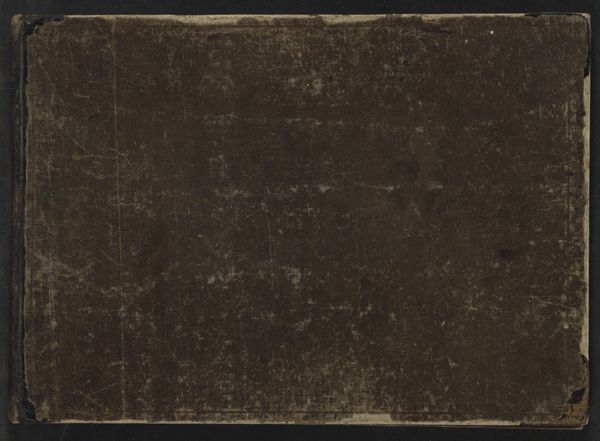
mixed-media, paper
#
mixed-media
#
impressionism
#
paper
#
texture
#
mixed media
#
watercolor
Dimensions: height 252 mm, width 335 mm, thickness 15 mm, width 673 mm
Copyright: Rijks Museum: Open Domain
Curator: Looking at this "Schetsboek met 44 bladen," or sketchbook with 44 leaves, created circa 1864-1865 by Maria Vos, what's your initial take? It's part of the Rijksmuseum's collection, executed in mixed media on paper. Editor: I'm immediately struck by the texture and the sense of age. The blue is quite somber, and the worn cover evokes a feeling of history, of secrets held within. It’s very tactile despite being just an image. Curator: That sense of secrets is key. Think about Vos, a female artist in the mid-19th century. Sketchbooks became crucial spaces of expression when formal avenues were limited. They represent an internal dialogue, a space free from the male gaze. What meanings do you see embedded in the presentation? Editor: The binding on the left, slightly tattered, seems almost like a wound or a threshold. It emphasizes the entry into a private world. Blue, in this context, also speaks of introspection, of a melancholic yet thoughtful temperament, especially in the 19th century. Do you see the flecks of lighter pigment as stars? Curator: Stars or perhaps just a haphazard result of age! It is this tension—this uncertainty between intention and accident—that opens up possibilities. The 'imperfection' of the materials resists idealized narratives. What do you read from that texture? Editor: I think the speckled effect speaks to a sense of resilience. The book has endured. Its survival testifies to the value someone placed on its contents. It also reminds us that even something as intimate as a sketchbook participates in a wider material culture. Curator: Precisely. It exists both as a personal repository and as a historical object with socio-cultural significance. Think of how that period saw growing debates about women's roles. How does accessing the artwork change knowing that social history? Editor: It makes me reflect on access. We're looking at a reproduction; there's something about the intimacy of the sketchbook that is inherently altered through digitization. But that accessibility opens up discussions about the politics of display. Curator: Right, because even access points and narratives of presentation embody socio-political positions and influence how a legacy unfolds. It gives us a lens for critiquing how we present artistic creation, especially creations by people systematically barred from resources or critical regard. Editor: It's amazing how an image of a simple sketchbook can spark so many interconnected lines of inquiry. Curator: It reminds us that material objects, especially artistic creations, are complex, multilayered nodes within networks of cultural meaning.
Comments
No comments
Be the first to comment and join the conversation on the ultimate creative platform.
